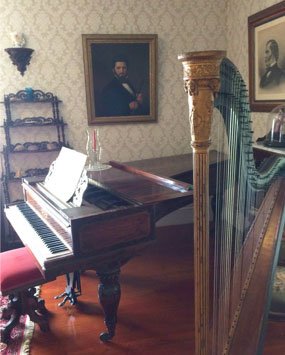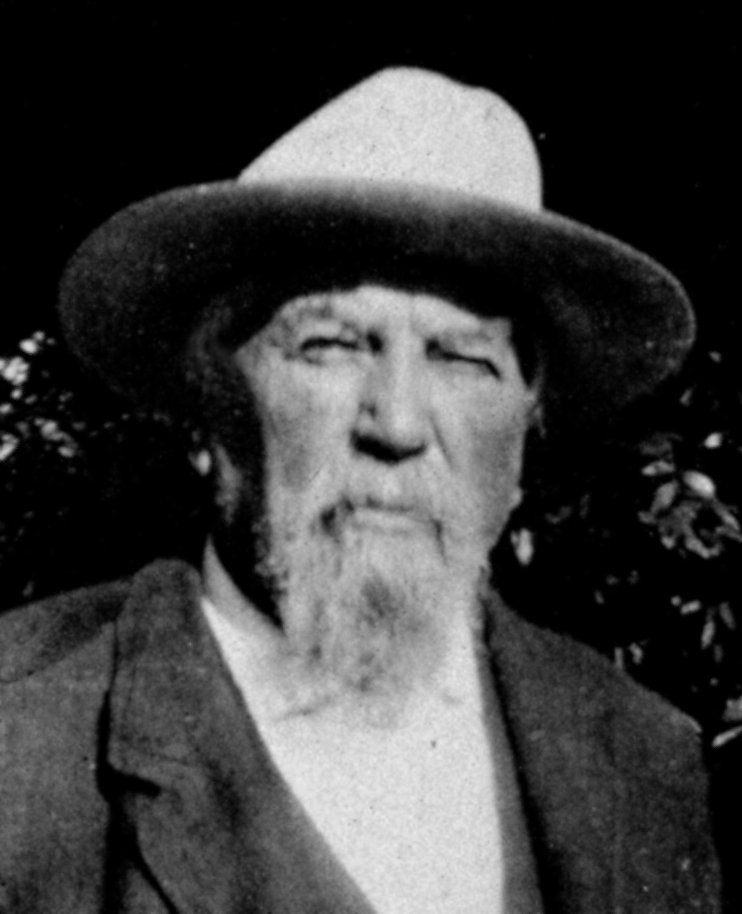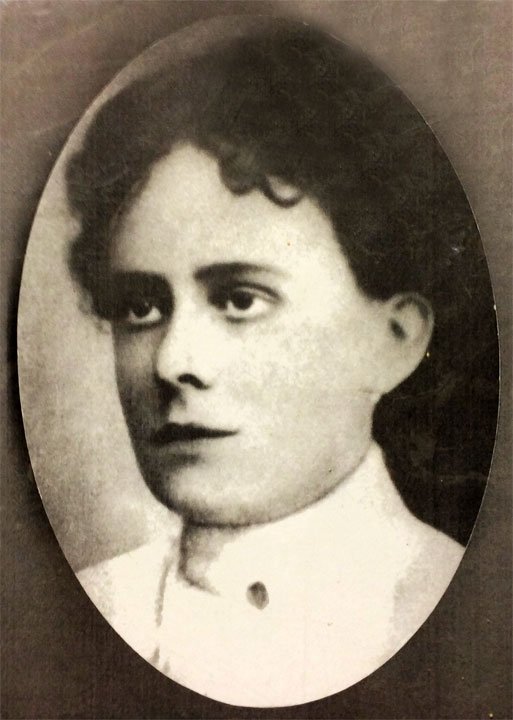
The Pioneers
Recognizing the possibilities of this newly discovered land, courageous and inventive people began filtering into Alta California from all parts of the world. While Americans rode into Sonoma Valley to seize control during the celebrated Bear Flag Revolt, squatters and homesteaders began to populate the hills above the valley floor. General Vallejo, having recognized the inevitability of California’s secession and U. S. statehood, began distributing the lands he had originally been authorized to oversee by the Mexican government. These are the people that shaped the region known as Glen Ellen.
Life there was tough, as Coleman’s niece Mary Jane recalled: “our house had only a roof and walls up, and father was still working for General Vallejo (who owned the grant). Father was working for $8.00 and $10.00 per day. Gen. Vallejo had wished that father would settle near the fort in order to protect his family…
“The lumber from the trees was split and worked into condition to build our house. Quilts were hung over the openings. It was a real struggle of brave people living in that undeveloped section. We were forced to make our own coffee and flour. The coffee was made from roasted barley. Later coffee was brought up on a supply ship which came up Petaluma Creek from San Francisco and cost $50.00 for a barrel. Usually mother and I drove to Sonoma for our supplies once each month. We left at daybreak in a buckboard wagon with “Hun” the mare to drive. Wild Spanish cattle would sometimes follow. The horses would take them as foes and tried to drive them off by rearing and pawing.
“We used to play with the Vallejo children; they learned English and we learned Spanish. There were fifteen children. We used to go to dances with the Vallejo girls, at the Vallejo adobe fort outside of Petaluma. Lib and I were the only ones old enough to go. The Vallejo girls carried cigarettes in their corset. When we got home mother would smell our breath and switched us. She said, “tobacco is for the comfort of old people.”
Ellen Mary Stuart pictured above
Andrés Höppener
The story of how General Vallejo came to offer all of Agua Caliente— the rancho originally granted to his officer Lázaro Piña— to Andrés Höppener in the spring of 1846 in exchange for five years of piano lessons for members of his family, has become a well- known local legend. Captain Stephen Smith had brought three pianos in his ship from Baltimore, the first to arrive in California. The General bought one, but there was no one in the Vallejo household who could play it, hence Höppner’s employment. The details of the conveyance of the land from Piña to Höppener by the agency of Vallejo, however, remain remarkably unclear to this day.
Höppener was a successful entrepreneur and businessman from the Russian colony in Alaska, who had already become well established as a professor of music and languages in San Francisco. The eating contest in which Höppner bested Jean Jacques Vioget is described in detail by William Heath Davis in his Seventy-Five Years in San Francisco. Vioget was a prominent San Francisco resident and prosperous saloon keeper, an excellent violinist, and the civil engineer that surveyed the lands of Captain Sutter; eventually he became captain of the brig Euphemia.
After receiving the Agua Caliente grant Höppener immediately subdivided the land, and became the first to develop and commercialize the hot springs of the area as a tourist destination.
Roulet & Asbury
In 1848, Patrick and Charity Roulet, with their two children, Virginia and Henry, established a farmstead on Sonoma Mountain near a spring above Vallejo’s saw mill, where Patrick worked. After Patrick’s death a year or so later Charity married Coleman Asbury, and they had a son named George.
William McPherson Hill
William McPherson Hill had come to San Francisco to join his father, Dr. John Howard Hill, before buying property in the Valley of the Moon in 1851. He is credited with making California’s first really famous Zinfandel as early as 1855, when he and General Vallejo owned the most extensive vineyards in Sonoma County. On May 20, 1870, the Alta California claimed Hill’s Zinfandel “would take the first at a National Exposition.”
In 1890 Hill sold seventeen hundred and sixty acres of his ranch to the state for the California Home for the Care and Training of Feeble Minded Children, now known as the Sonoma Developmental Center— an institution that has made a significant impact on the region.
Joseph Hooker
For more than a decade, after the Mexican American War and before the Civil War, Joseph Hooker was stationed in the Valley of the Moon as a Lieutenant Colonel. One of the younger and few clean-shaven American officers, he was popular with the local senoritas, and developed a reputation for handling his drink and his women.
Restless to take part in public service he campaigned— unsuccessfully— for state senate, and eventually settled upon a large section of the Rancho Agua Caliente. Hooker worked the land himself, with the help of men like John K. Jenkins, who wrote this description of farming life then in Sonoma Valley.
“Some of the ground on which he raised Barley was so very rough that we could not rake it, and he employed a small tribe of Indians to pick it up and lay it in piles… As fast as we cleaned the barley, it was put up into gunny bags and weighed and marked ready for market. At the time this barley was sewn it was worth fifteen cents per pound, and when harvested and threshed, was worth from one and a half to two cents, so that the thing that made men rich the year before, made them poor this year… such was the fickle fortune in California…”
It should be said that, although Hooker’s name bears unfortunate similarity to a popular synonym for prostitutes, the term originated elsewhere and had appeared in print many years before his stay in Sonoma. Likewise, he abhorred the sobriquet “Fighting Joe”, which was the result of a typographical error in an eastern newspaper. Jefferson Davis used to annoy him greatly by referring to him as “Mr. F. J. Hooker”.
Hooker’s relationship with President Lincoln was very close. Unlike other generals, he was frequently invited to the White House for breakfast and other informal visits. As the Civil War loomed Hooker wrote directly to Lincoln asking to take part, and was appointed brigadier general in 1861.
Charles Justi
Iarl August Frederick Justi emigrated to America from Saxony, where he was born in 1812; he anglicized his name to Charles and settled in South Carolina with his wife Marie. He is typical of the courageous and inventive people that came to settle in our valley. These pioneers were characterized by an eager willingness to accept and meet challenges, with a recognition of the opportunities California offered.
After his arrival in America Justi became a jeweler and watchmaker, but when gold was discovered in California he sold everything he had to buy a sailboat, which he filled with lumber to build their new home, and sailed around the Horn to San Francisco. During that journey of nine months, the first of eleven children was born. When they finally arrived in 1849, he scuttled his boat in the bay to serve as a warehouse and built a home on Jackson Street, carrying each timber there by hand.
Justi opened a jewelry business, and made a name for himself gilding buttons for the uniforms of officers at the Presidio. In 1853 he closed his shop, purchased a steamboat, and began operating a freight and passenger service to Sonoma. While in Sonoma he bought 551 acres in the Glen Ellen region and began raising grapes and making wine, while Marie kept a boarding house for travelers. Because their ranch was halfway between Sonoma and Santa Rosa, Wells Fargo established a stage coach stop there, and in 1872 he was named the first postmaster of Glen Ellen.
Charles died on his ranch in 1885, where his son Leopold was born in 1864. A deeply respected judge, Leopold served the community for many years in many ways, including as the local justice of the peace; he died in 1946.
Joshua Chauvet
Joshua Chauvet was accustomed to hard work, but his first season in the goldfields was— as it proved for many— a miserable disappointment. Meanwhile the bread Joshua baked for other miners was, on the other hand, a definite success; but flour proved as expensive as gold, so he asked his father to bring millstones from France to grind the flour that he needed.
After trying several different locations in the gold country Chauvet came here in 1856, to the mill Vallejo had built where Asbury Creek emptied into Sonoma Creek, and he recognized it as the perfect place to finally settle down. The trees had been mostly harvested by then, and farmers had begun growing grain; it was time to convert the saw mill into a grist mill.
Chauvet was in the right place at the right time. He helped develop the region, welcoming settlers as they arrived and arranging the sale of land to them. He developed a water system and a brickyard, and established one of the first wineries in the region. When the trains eventually arrived, his wines became known throughout the country.
George Watriss
George Watriss had enjoyed an extraordinary reputation as hotelier and restauranteur, opening the Astor House in New York and the St. Charles Hotel in New Orleans, before coming to San Francisco in 1851. He worked for a while at Moffat & Co., the most important assaying and minting operation in San Francisco while, like many householders in San Francisco, the Watriss family rented rooms of their home to boarders. Then they took over management of the fashionable Oriental Hotel, which figured largely in the social, economic and political development of early San Francisco.
Then, on February 15, 1858, Martha Watriss wrote to her son in New York: “A farm or ranch was offered for sale in Sonoma containing six hundred and forty acres or a mile square called the Hooker Ranch for the sum of ten thousand dollars… your father and Frank Brown went to look at it and found it every thing it was represented. It is situated about two mile from the City of Sonoma, bounded on one side by Sonoma Creek where plenty of salmon trout are caught and on one side by mountains and on the other sides by splendid large oak trees laid out they say like a fine park; so you see there is plenty of wood and water, and there are plenty of people who have spent weeks at the farm that declare it to be the Paradise of California.”
With that the Watriss family relocated to the Valley of the Moon, and their home inevitably became a popular social gathering place in the growing community over the following years.
Charles Stuart
Charles Vaincoeur Stuart was born in 1819 in Pennsylvania, into a prosperous and prominent Pennsylvania family. That region was famous for an amazing variety of reform movements, including women’s rights, pacifism, temperance, prison reform, abolition of slavery, an end to capital punishment, improving the conditions of the working classes, and several utopian social experiments. He was deeply influenced by these movements. Later in life he punctuated his speeches not only with Biblical references, but with references to the works of Victor Hugo and Robert Burns as well, demonstrating a liberal education that proved fundamental to a pragmatic yet literary and even visionary attitude.
In 1849 Stuart joined fifty neighbors in establishing a mule pack train to go to California without the hindrance of the slower ox-drawn wagons. He was elected captain of the train, indicating his position in the community as a prominent and respected leader. In the diary he kept he wrote “our journey was one of extreme hardship both for men and animals… the valleys filled with sand and alkalie, the mountain and hills covered with piles of huge volcanic rocks, all the streams, springs and wells, bitter or salt, and no living reptile or insect but its bite or sting is poisonous…”
While the other men quickly went to the goldfields, Charles went instead to San Francisco where, as a pragmatic and practical man, he easily recognized the opportunity to merchandise vegetables in the quickly growing city, so he began farming 40 acres near the mission. He was elected to the City’s first Board of Aldermen in 1850, as the new city began settling down to govern itself, and built the first brick home in the city. His wife Ellen joined him, bringing their children with her.
Stuart’s business interests brought him to Sonoma County where he bought several parcels, including a large part of the Agua Caliente Land Grant in 1859. In fact, to ensure ownership during those uncertain times in real estate, he purchased the property several times from several people. Here he established a vineyard which he named Glen Ellen, after his wife. When the post office was established in 1872 and named Glen Ellen, he renamed his ranch Glen Oaks, to avoid confusion.
Stuart served as a delegate to the California Constitution Convention, which opened in 1878. A prominent citizen with a reputation as a shrewd businessman, he described himself as a Democrat who had changed parties to vote for Lincoln. His early education in social reform made him the only delegate to speak passionately in favor of the Chinese towards the end of the convention in 1879, and in favor of humane regulation of immigration. His eloquent words however fell on deaf ears. The constitution was signed, and the abhorrent Chinese Exclusion Act was established soon afterwards. Stuart died quietly the following year in the home he had built in Glen Ellen.
Lajos Csomortányi
Lajos Csomortányi was born in Hungary in 1822, but after serving as an officer in the ill-fated War of Liberation in 1848-49 he was forced to leave, eventually sailing to America in 1852. He worked at first in factories on the east coast, and in the construction of the Panama Canal. Eventually he came to California where he became a close friend of his countryman Ágoston Haraszthy, who introduced him to viticulture.
In 1859 he bought 500 acres from General Mariano Vallejo, 60 acres of which he established as the Tokay Vineyard (named for the celebrated vineyards of Hungary), one of the very first vineyards of the region. Here he built the cabin that years later became the cottage in which Jack London lived and died.
After Csomortányi’s death in San Francisco in 1869, his vineyard was further developed by Charles Kohler into one of the largest wineries in California. It was eventually absorbed into the California Wine Association and later purchased by Joshua Chauvet, who sold it to Jack London in 1911.
Jacob B. Warfield, MD
Dr. Jacob (sometimes known as James) B. Warfield was born in Ohio in 1819, and attended medical school in Cincinnati where he graduated in 1849. He practiced briefly in Missouri before coming to the goldfields of California, where he mined while opening what quickly became a successful practice in North San Juan, El Dorado County. He returned to stay with his parents briefly until his father died in 1856, when he returned to North San Juan.
In 1858 Warfield was elected to the California State Assembly, while he continued mining and merchandising, in addition to his practice. The following year he bought land in Glen Ellen as a speculation, and in 1860 he moved to San Francisco where he became a businessman while still practicing as a doctor.
In 1862 he began planting a 16 acre vineyard in Mission Grapes, calling his ranch in Glen Ellen Ten Oaks. He married Catherine Overton— who was always known as Kate— in 1864; she became very involved in farming as well as winemaking. Warfield went on to serve as California State Assemblyman from Sonoma County, and was considered to be fair and statesmanlike in his service.








